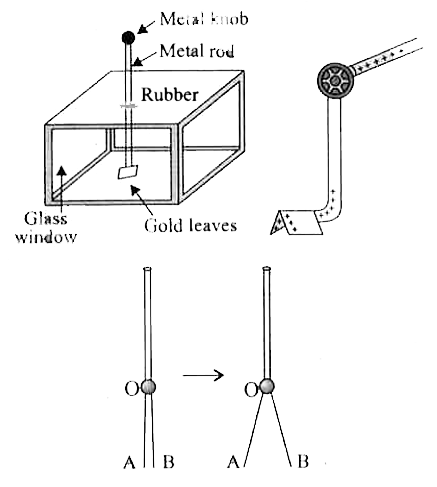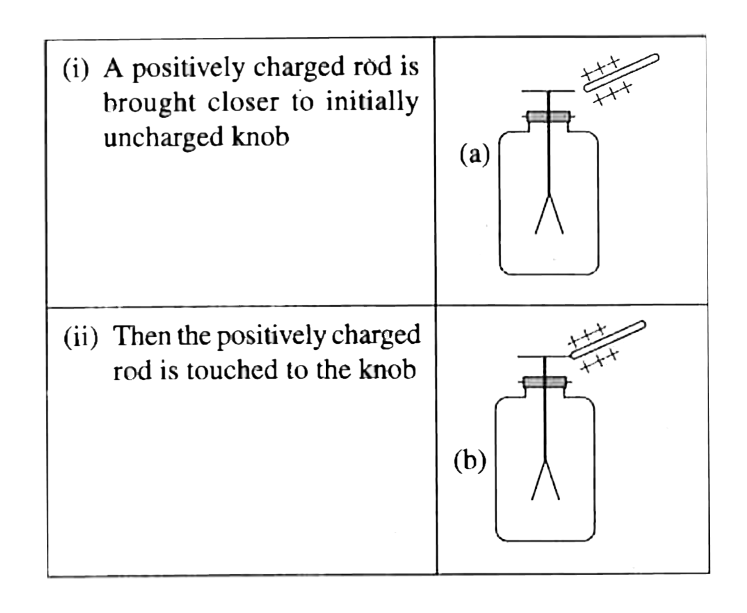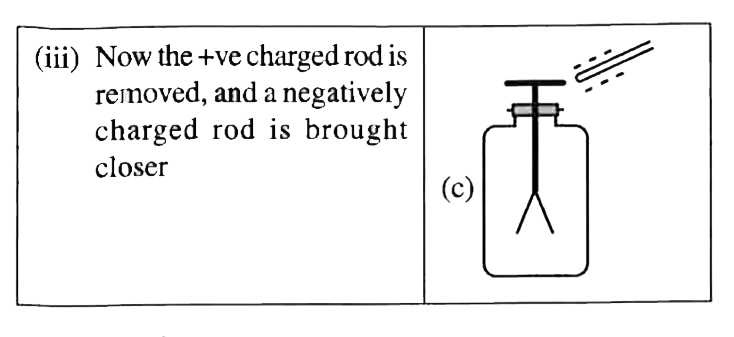Assertion : The transfer of electrons from zinc to copper takes place through metal wire connecting the two rods.
Reason : Electricity from solution in one beaker to other flows by migration of ions through the salt bridge.
If both assertion and reason are true and reason is the correct explanation of assertion.
If both assertion and reason are true but reason is not the correct explanation of assertion.
If assertion is true but reason is false.
If both assertion and reason are false.
The correct Answer is:B
To solve the question, we need to analyze both the assertion and the reason provided.
Step 1: Analyze the Assertion
The assertion states: "The transfer of electrons from zinc to copper takes place through a metal wire connecting the two rods."
- In a galvanic cell, zinc acts as the anode and copper as the cathode.
- Zinc undergoes oxidation (loses electrons) and these electrons flow through the metal wire to the copper electrode, where they are accepted (reduction occurs).
- Therefore, the assertion is correct because the transfer of electrons indeed occurs through the metal wire.
Step 2: Analyze the Reason
The reason states: "Electricity from solution in one beaker to another flows by migration of ions through the salt bridge."
- The salt bridge connects two half-cells and allows the flow of ions to maintain electrical neutrality as electrons flow through the external circuit.
- However, the statement implies that the migration of ions produces electricity, which is misleading. The flow of electricity (current) is due to the movement of electrons in the external circuit, while the migration of ions helps to balance the charge in the half-cells.
- Thus, the reason is incorrect because it does not accurately describe the role of ion migration in the context of electricity generation.
Conclusion
Based on the analysis:
- The assertion is correct.
- The reason is incorrect.
Therefore, the correct option is Option 2: Assertion is correct, but Reason is incorrect.
The assertion states: "The transfer of electrons from zinc to copper takes place through a metal wire connecting the two rods."
- Zinc undergoes oxidation (loses electrons) and these electrons flow through the metal wire to the copper electrode, where they are accepted (reduction occurs).
- Therefore, the assertion is correct because the transfer of electrons indeed occurs through the metal wire.
The reason states: "Electricity from solution in one beaker to another flows by migration of ions through the salt bridge."
- However, the statement implies that the migration of ions produces electricity, which is misleading. The flow of electricity (current) is due to the movement of electrons in the external circuit, while the migration of ions helps to balance the charge in the half-cells.
- Thus, the reason is incorrect because it does not accurately describe the role of ion migration in the context of electricity generation.
Based on the analysis:
- The assertion is correct.
- The reason is incorrect.
Topper's Solved these Questions
- REDOX REACTIONSBOOK - NCERT FINGERTPS ENGLISHCHAPTER - REDOX REACTIONSEXERCISE - Redox Reactions In Terms Of Electron Transfer Reactions
5 Videos
- REDOX REACTIONSBOOK - NCERT FINGERTPS ENGLISHCHAPTER - REDOX REACTIONSEXERCISE - Oxidation Number
70 Videos
- REDOX REACTIONSBOOK - NCERT FINGERTPS ENGLISHCHAPTER - REDOX REACTIONSEXERCISE - NCERT EXEMPLAR PROBLEMS
11 Videos
- PRACTICE PAPER 3BOOK - NCERT FINGERTPS ENGLISHCHAPTER - PRACTICE PAPER 3EXERCISE - Practice Paper 3
46 Videos
- SOME BASIC CONCEPTS OF CHEMISTRY BOOK - NCERT FINGERTPS ENGLISHCHAPTER - SOME BASIC CONCEPTS OF CHEMISTRY EXERCISE - NCERT Exemplar
11 Videos
Similar Questions
In a galvanic cell, electrons flow from ........to ....... through the connecting wires.
View SolutionThe resonance effect is defined as 'the polarity produced in the molecule by the interaction of two π-bonds or between a π-bond and lone pair of electrons present on an adjacentatom.' The effect is transmitted through the chain.
In positive resonance effect, the transfer of electrons is away from an atom or substituent group attached to the conjugated system. This electron displacement makes certain positions in the molecule of high electron densities. In negative resonance effect, the transfer of electrons is towards the atom or substituent group attached to the conjugated system.
Which of the following carboxylate ions is the most stable ?
View Solution
Knowledge Check
Assertion : The metabolic pathway through which the electron passes from one carrier to another is called the electron transport system (ETS)
Reason : ETS is present in the inner mitochondrial membrane.AIf both assertion and reason are true and reason is the correct explanation of assertionBIf both assertion and reason are true but reason is not the correct explanation of assertionCIf assertion is true but reason is falseDIf both assertion and reason are falseAssertion : When bodies are charged through friction, there is a transfer of electric charge from one body to another, but no creation or destruction of charge.
Reason : This follows from conservation of electric charges.AIf both assertion and reason are true and reason is the correct explanation of assertion.BIf both assertion and reason are true but reason is not the correct explanation of assertion.CIf assertion is true but reason is false.DIf both assertion and reason are false.Assertion:When a copper wire is dipped in silver nitrate solution, there is no change in the colour of the solution.
Reason : Copper cannot displace silver from its salt solution.AIf both assertion and reason are true and reason is the correct explanation of assertion .BIf both assertion and reason are true but reason is not the correct explanation of assertion .CIf assertion is true but reason is false .DIf both assertion and reason are false .
A copper atom consists of copper nucles surrounded by 29 electrons. The atomic weight of copper is 63.5gmol−1. Let us now take two pieces of copper each weighing 10g. Let one electron from one piece be transferred to another for every 1000 atom in a piece. ltbRgt (a) Find the magnitude of charge appearing on each piece.
(b) What will be the Coulomb force between the two pieces after the transfer of electrons if they are 10cm apart?
View SolutionA leaf electroscope is a simple apparatus to detect any charge on a body. It consist of two metal leaves OA and OB, free to rotate about O. Initially both are very slighty separted. When a charged object is touched to the metal knob at the top of the conduction re, charge flows from knob to the top of the conduction rod, charge flows from knob to the leaves through the conducting rod, charge flows from knob to the leaves through the conduction rod. As the leaves are now charged similarly, they start repelling each other and tet separted (deflected by certain angle).

The angle of deflection in static equilibrium is an indicator of the amount of charge on the charged boy.
When a+20C rod is touched to the knob, the deflection of leaves was 5∘, and when an identical rod of −40C is touched, the deflection was found to be 9∘. If an identical rod of +30C is touched, then the deflection may be:
View SolutionA leaf electroscope is a simple apparatus to detect any charge on a body. It consist of two metal leaves OA and OB, free to rotate about O. Initially both are very slighty separted. When a charged object is touched to the metal knob at the top of the conduction re, charge flows from knob to the top of the conduction rod, charge flows from knob to the leaves through the conducting rod, charge flows from knob to the leaves through the conduction rod. As the leaves are now charged similarly, they start repelling each other and tet separted (deflected by certain angle).

The angle of deflection in static equilibrium is an indicator of the amount of charge on the charged boy.
If we perform these steps one by one.


In which case, the leaves will converge (come closer), as compared to the previous state?
View SolutionAssertion : Translocation of sugar from source to sink is defined as pressure flow hypothesis. Reason : Translocations of the solutes is facilitated through living phloem sieve tube cells
View SolutionAssertion : Insert electrolytes like KCl, KNO3 are used in salt bridge.
Reason : Salt bridge provides an electric contact between the two solutions without allowing them to mix with each other.
View Solution
